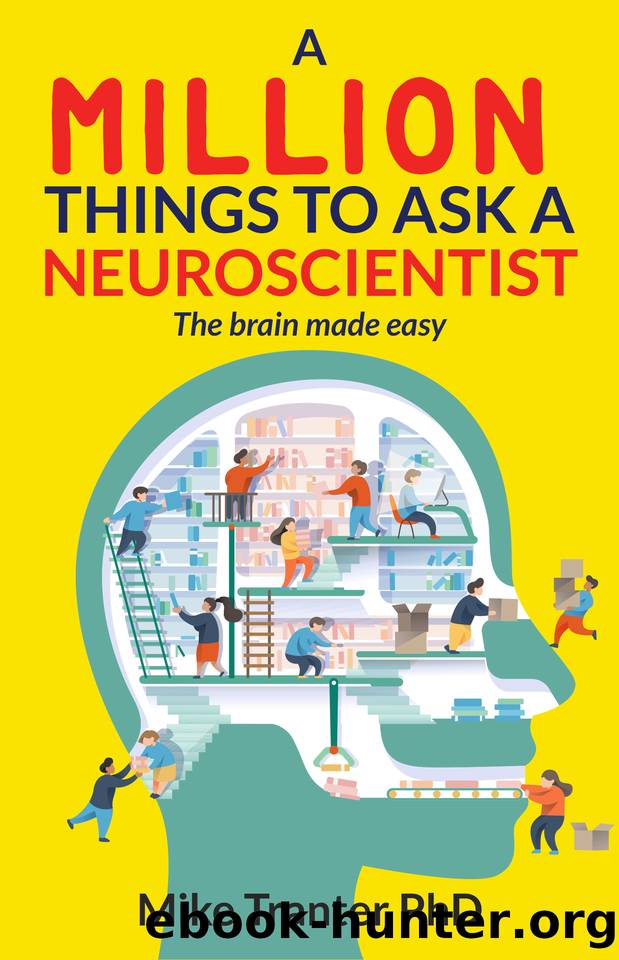A Million Things To Ask A Neuroscientist: The brain made easy by Tranter Mike

Author:Tranter, Mike [Tranter, Mike]
Language: eng
Format: epub
Published: 2021-04-22T16:00:00+00:00
Capgras syndrome
T his entry into the X-Files of neuroscience is fascinating, albeit a little heartbreaking. Capgras syndrome is a specific situation where familiar people seem like strangers. Your mother may look like herself, sound the same and even have the same memories as her, and yet you do not recognise her as your mother, only a lookalike or imposter. This delusion may also be transferred to objects such as your house, whereby you believe you are viewing another home, even though you realise it is very similar to your own. Capgras syndrome is often a symptom of a psychiatric disorder or dementia, but can also be caused by brain injury, infection or drug abuse.
Named after the French psychiatrist Joseph Capgras, who first described this phenomenon in 1923, it would have been an odd and unusual symptom to rationalise, and even a century later, the precise reasons remain a mystery. In 1991, M. David Enoch and William (Bill) Trethowan1 attempted to solve this mystery by seeing it not as a neurological abnormality, but as a psychological dispute with your own inner love-hate conflict, directing hate towards the imposter but retaining a love for the original person.
This may help to explain the relationship with familiar people, but it fails to explain why this delusion spreads to objects and locations such as a personâs house. From a neuroscience point of view, it is thought to involve the visual and memory parts of our brains, and how they are connected to our emotional areas throughout the limbic system. This would explain why the brain can recognise a familiar person yet is unable to couple it with the correct emotional context, resulting in your mother feeling like a woman you may know but have no emotional connection with.
This seems sensible when we consider the following case study, where a man developed Capgras syndrome after a car accident had left him with a traumatic brain injury.2 After apparently recovering well he was able to identify his parents but only as imposters who looked and acted like them. Rather interestingly, this was not the case if they were talking over the phone, when he would readily accept that they were his parents. Scientists concluded that when the visual cortex in the brain wasn't needed, such as when speaking on the telephone and not speaking with his parents in person, the memories and emotional context remained coupled, meaning he could freely engage with his parents without any delusional distractions. This adds to the weight of evidence suggesting that Capgras syndrome results from a disconnection between the visual and emotional regions in the brain.
Another case study from a 77-year-old woman explains even more of this phenomenon. She was found by her son talking to a person in the mirror. Being deaf, she was using sign language, and when asked about this other woman in the mirror, she told her son that although she looked similar to herself and even had a similar life story, she could not possibly be the same person.
Download
This site does not store any files on its server. We only index and link to content provided by other sites. Please contact the content providers to delete copyright contents if any and email us, we'll remove relevant links or contents immediately.
The DNA Book by DK(622)
The End of Food Allergy by Kari Nadeau MD PhD & Sloan Barnett(606)
Extra Life by Steven Johnson(525)
Unlocking Eden: Revolutionize Your Health, Maximize Your Immunity, Restore Your Vitality by Belt Daniel & Horn Joe(513)
Your Brain Is Always Listening by Dr. Daniel G. Amen(510)
The Hospital by Brian Alexander(487)
The Covid Survival Guide: What the Virus Is, How to Avoid It, How to Survive It by Rowell David(479)
The Spike by Mark Humphries;(462)
How to Sleep by Rafael Pelayo(453)
The Low-FODMAP IBS Solution Plan and Cookbook by Rachel Pauls(453)
Better Living Through Neurochemistry - A guide to the optimization of serotonin, dopamine and the neurotransmitters that color your world by James Lee(434)
Thrivers by Michele Borba Ed. D(425)
The Big Book of Baby Names by Marissa Charles(419)
Linda Goodman's Love Signs by Linda Goodman(415)
Stroke For Dummies by John R. Marler(403)
The Miracle Pill by Peter Walker(400)
Immunity by Jenna Macciochi(397)
The Hashimoto's AIP Cookbook: Easy Recipes for Thyroid Healing on the Paleo Autoimmune Protocol by Emily Kyle MS RDN CLT HCP & Phil Kyle Chef(385)
Pandemics: A Very Short Introduction (Very Short Introductions) by Christian W. McMillen(383)
